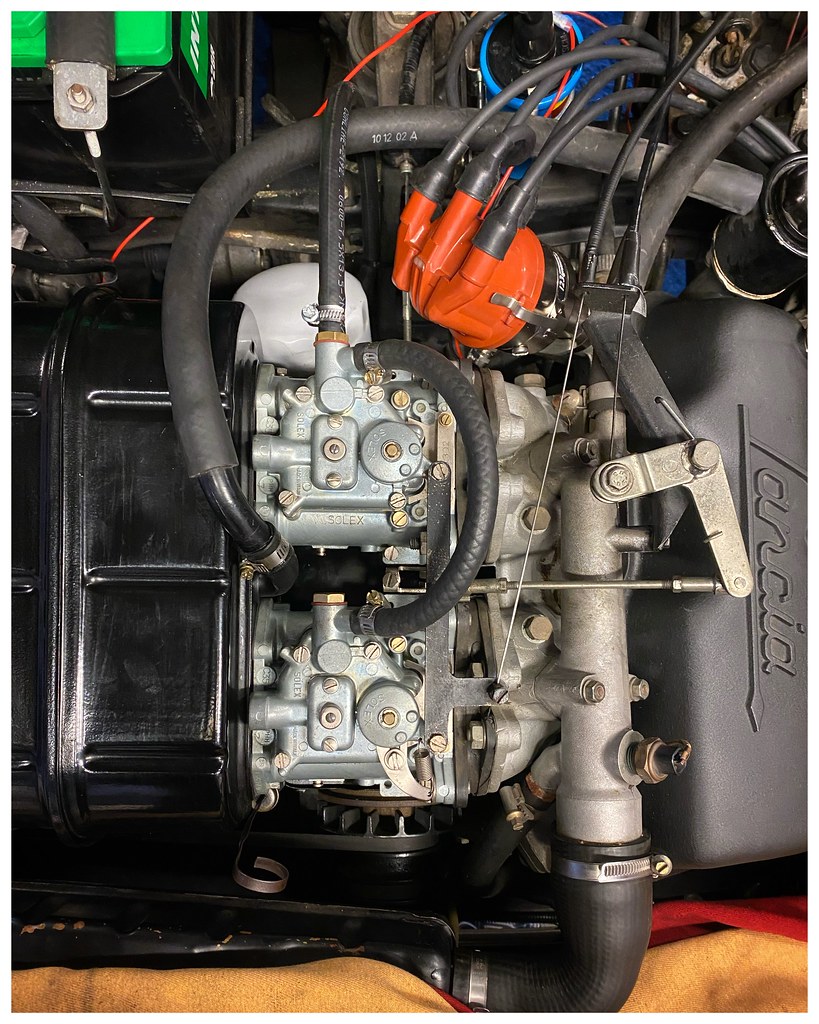Godfrey
somewhat colored
Follow on to https://www.rangefinderforum.com/node/100109/page514 post #10277
I figured I have to have at least one Polaroid shot of the Fulvia posted! :angel:

1967 Lancia Fulvia Coupe, Out for Saturday Breakfast - San Jose 2021
Polaroid SLR670a, 600 Color
Scanned with Impossible app on iPhone 11 Pro
Rendered with Snapseed
Signora Fulvia is now running quite nicely, but the brake master cylinder is failing. So I decided it was safe enough to take it on a short ride to go to breakfast yesterday while I wait for the new master cylinder to arrive.
It was cold as all heck (35°F in the garage) and I wondered whether I'd have any trouble starting it... No problem at all, fired up instantly with the choke, idled nicely just a couple of minutes later.
As expected, traffic was very light, the distance very short, and I had no problems getting to the cafe to meet up with my regular Saturday breakfast buddies. Three times on the way there someone pulled up next to me, shouting: "What is that? Is it an Alfa Romeo?" and some such. There are so few of these cars around!!! At least they realized it was Italian... LOL!
After breakfast, my buddy Dave walked out with me to the lot to see the car. "Where'd you park it?"
I laughed ... "Right over there on the first row. But it's so small that *anything* parked next to it hides it." A Prius and some Ford or another had pulled into the spots next to the Fulvia: you could barely see it even just ten feet away. I may have to put one of those key finder fobs in the glove compartment...
On the way home, I felt the brake pedal go spongy twice. Hmm. Well, the new brake master cylinder should be here in just a couple of days. Signora Fulvia will stay parked until it arrives ... its last drive on the ailing brake cylinder will be to the shop, and it will start 2022 with reliable brakes!
😀
Enjoy! G
I figured I have to have at least one Polaroid shot of the Fulvia posted! :angel:

1967 Lancia Fulvia Coupe, Out for Saturday Breakfast - San Jose 2021
Polaroid SLR670a, 600 Color
Scanned with Impossible app on iPhone 11 Pro
Rendered with Snapseed
Signora Fulvia is now running quite nicely, but the brake master cylinder is failing. So I decided it was safe enough to take it on a short ride to go to breakfast yesterday while I wait for the new master cylinder to arrive.
It was cold as all heck (35°F in the garage) and I wondered whether I'd have any trouble starting it... No problem at all, fired up instantly with the choke, idled nicely just a couple of minutes later.
As expected, traffic was very light, the distance very short, and I had no problems getting to the cafe to meet up with my regular Saturday breakfast buddies. Three times on the way there someone pulled up next to me, shouting: "What is that? Is it an Alfa Romeo?" and some such. There are so few of these cars around!!! At least they realized it was Italian... LOL!
After breakfast, my buddy Dave walked out with me to the lot to see the car. "Where'd you park it?"
I laughed ... "Right over there on the first row. But it's so small that *anything* parked next to it hides it." A Prius and some Ford or another had pulled into the spots next to the Fulvia: you could barely see it even just ten feet away. I may have to put one of those key finder fobs in the glove compartment...
On the way home, I felt the brake pedal go spongy twice. Hmm. Well, the new brake master cylinder should be here in just a couple of days. Signora Fulvia will stay parked until it arrives ... its last drive on the ailing brake cylinder will be to the shop, and it will start 2022 with reliable brakes!
😀
Enjoy! G






20180213181218)